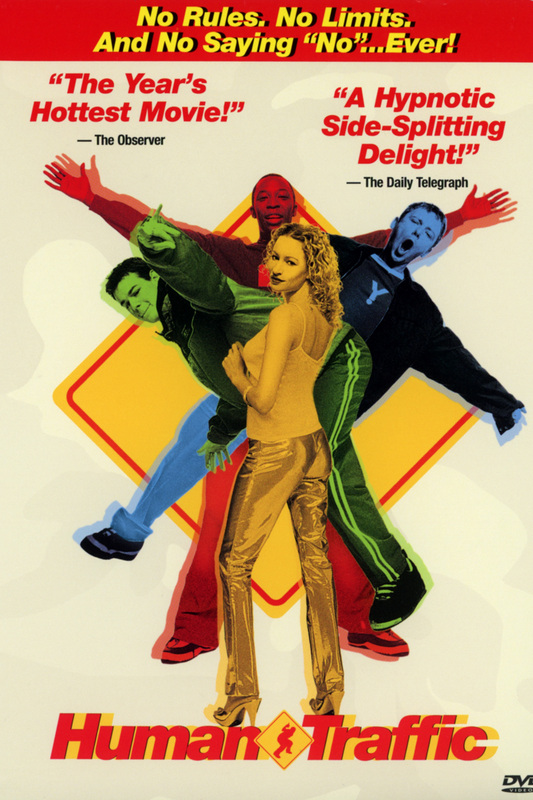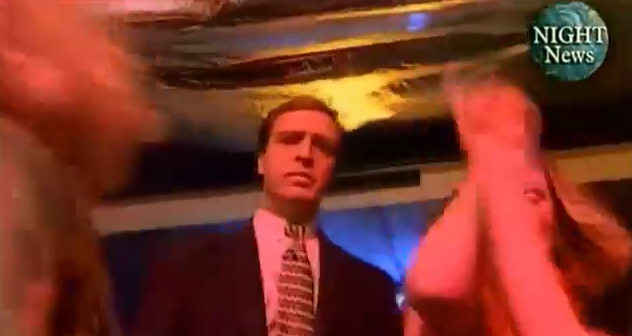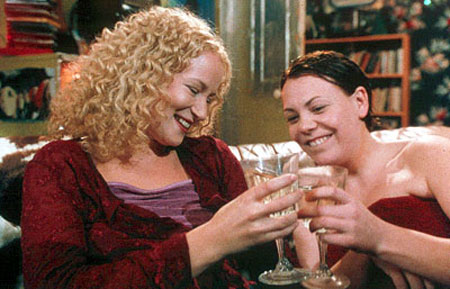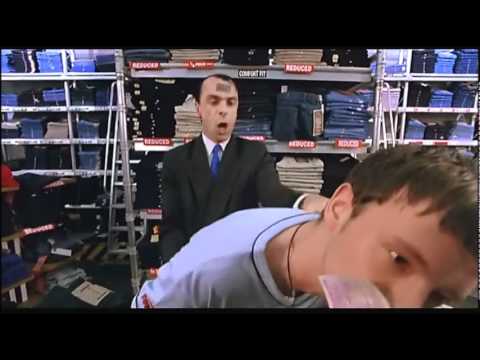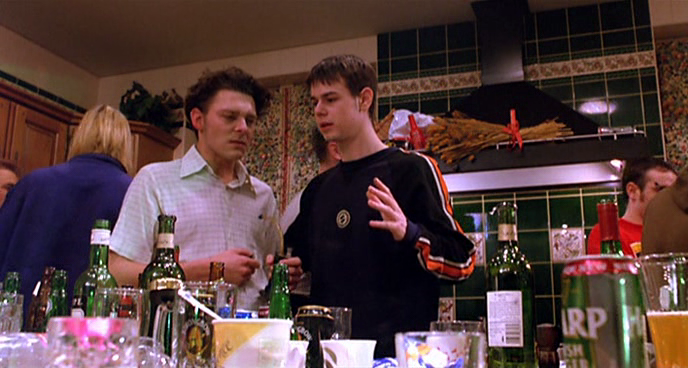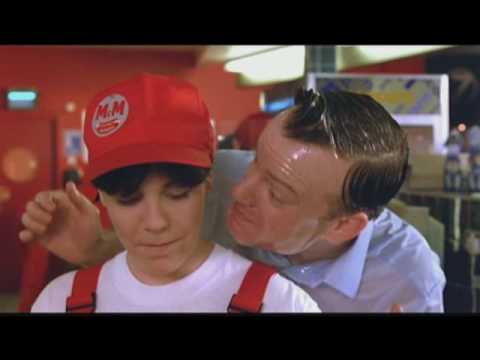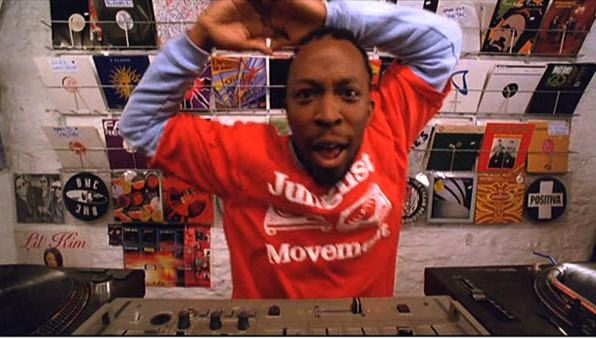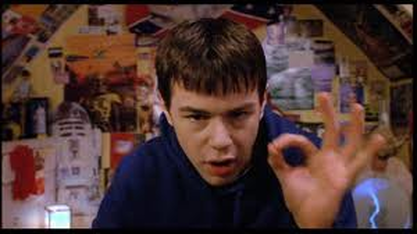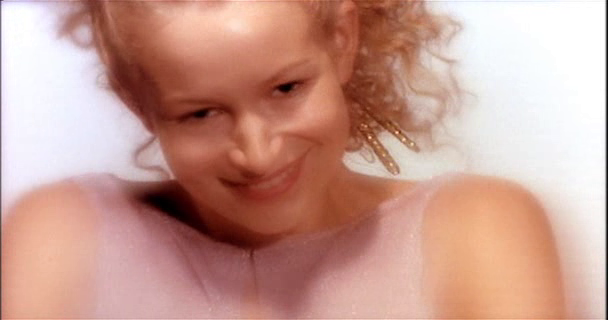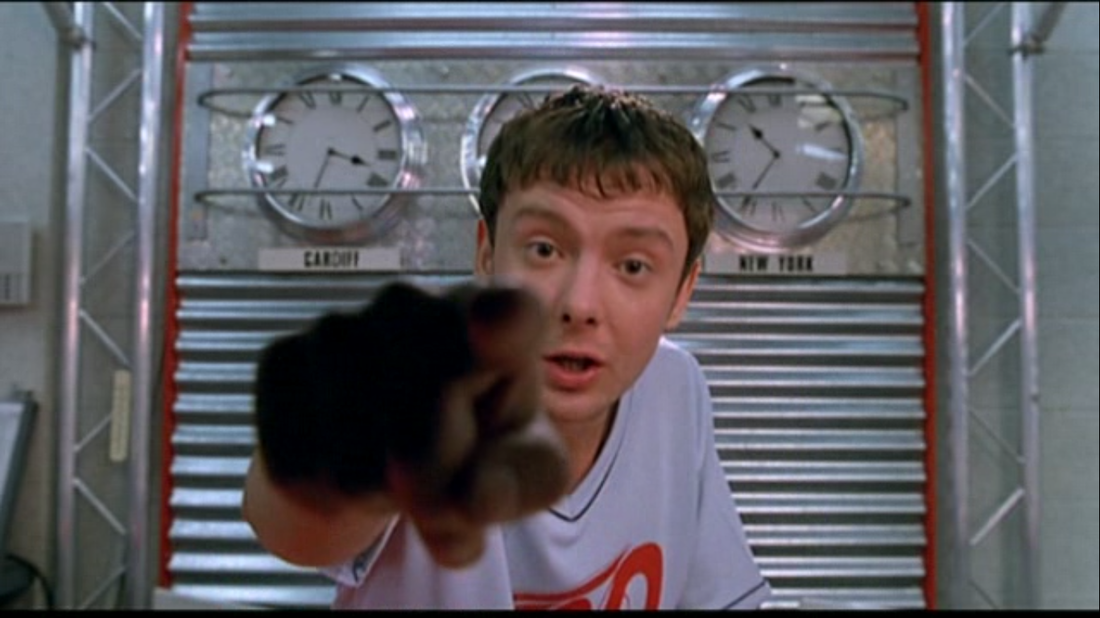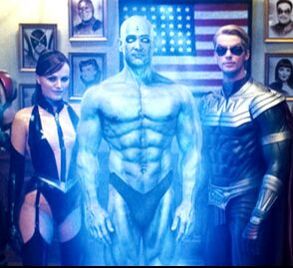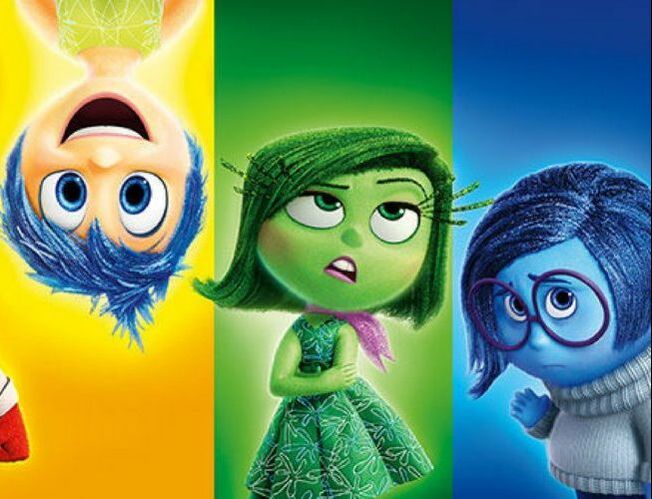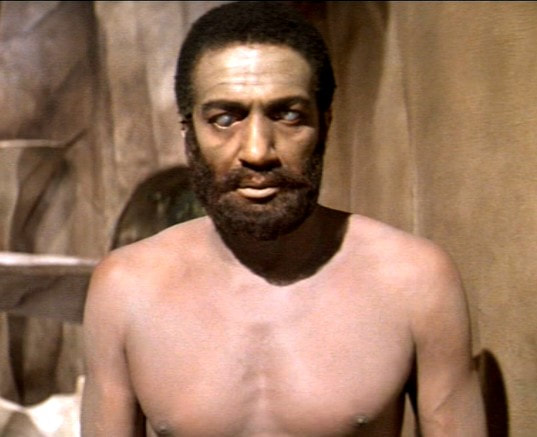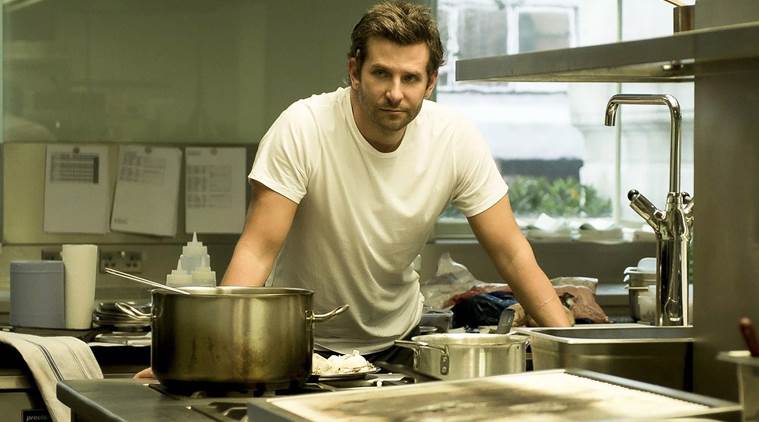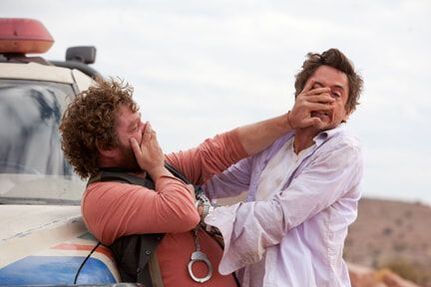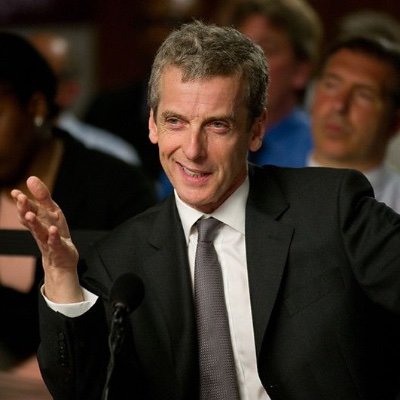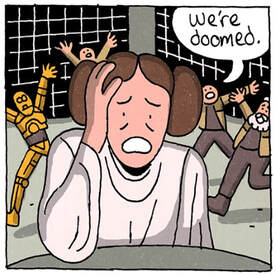Baudrillard, Post-Modern Perspective and Ambiguous Reality in Justin Kerrigan's Human Traffic
|
|
HUMAN TRAFFIC (1999)
'HAN SOLO IS AN INTERGALACTIC SMACK DEALER'
'HAN SOLO IS AN INTERGALACTIC SMACK DEALER'
|
HOW
HUMAN TRAFFIC EXPLORES THE POST-MODERN PERSPECTIVE OF AMBIGUOUS
REALITY
By Daniel Yeo
Post-modern theorist Jean Baudrillard claims that there
are four stages of the sign and its relationship with ‘reality’.
Here we explore this plurality and ambiguity, employing Justin
Kerrigan’s contemporary film, Human
Traffic1a,
and the drug culture that it depicts as an example. We examine how
the film deconstructs what is traditionally perceived as reality and
reconstructs a transgressive alternative, while also acknowledging
the film’s post-modern tendencies towards micro-narratives and the
way in which typical audience relations are subverted.
1a Human Traffic, dir. by Justin Kerrigan (Fruit Salad Films, 1999)
|
'SAFE AS FUCK'?: BAUDRILLARD, CLUBBING AND ECSTASY
It is important to note that the protagonists
immediately reject cinema’s traditional perception of reality. The
film opens with a direct audience address from Jip (John Simm), which
deconstructs cinematic expectations as well as the illusion of
reality. What Nicholas O’Pagan describes as ‘the viewer
identification sought by traditional film-makers1b
is instantly and deliberately cast aside, in favour of a less typical
perspective on reality. The boundaries between actors and audience
are broken down through a second person dialogue, delivered directly
towards the camera, which Jip even points at, emphasising the film’s
construction and artificiality. The four other protagonists also
address opening monologues to the camera and, in a later scene, even
invite the audience into a house party, treating them as a character
in the film.
|
Baudrillard’s assertion that ‘reality no more exists
outside than inside the bounds of the artificial perimeter1c
is justified with regards to Kerrigan’s techniques. By involving
the audience so directly and blurring the boundaries that separate
them from the film, the illusion of fact versus fiction is shattered.
As a result, Human Traffic
(1999) rejects the traditional comforting escapism of cinema and
challenges the audience’s perception of reality, leading them to
question the very nature of the concept in their own society as well
as within the confines of the film itself.
|
1b Pagan, Nicholas O., ‘“The Cook, the Thief, His Wife and Her Lover”: Making Sense of post-modernism’, South Atlantic Review, Vol. 60, No. 1, January 1995, pp. 43-55
1c Lane, Richard J., Jean Baudrillard (London: Routledge, 2000), p. 85 |
This paradox of both involving and isolating the
audience is emphasised in the Sing-Along section of the film, as Jip,
stressed by the demands of British society, stands up in the middle
of a bar and sings a reworded national anthem, with lyrics provided
at the bottom of the screen. This technique is notable in children’s
cartoons or music videos and is clearly designed to involve the
audience through seemingly the most practical of methods. However,
employed out of its traditional context in a film with a BBFC rating
of 18, the technique becomes extremely isolating and conspicuously
disrupts the flow and illusion of reality of the piece. This
deliberate depiction of falsity is present throughout the film,
through sections of news and documentary style presentation during
the group’s time in the club. Lulu (Lorraine Pilkington) and Nina
(Nicola Reynolds) are interviewed about their drug habits by a
film-maker, whom they playfully mock, while a later scene is filmed
in the style of a news program. Although the reporter seems serious,
the artificiality of his piece is apparent as the pompously middle
class, well-dressed and humorously named ‘Jeremy Faxman’ (Mark
Seaman) begins to communicate using the discourse of club-goers,
employing neologistic terms like ‘coin’ and ‘homeboys’. He
confirms his position as an illusory figment of Lee’s imagination,
as he signs off his report with ‘safe as fuck’, before joining
the rest of the crowd in dancing. This subversion of a form of media
normally perceived as real or factual is a further transgression of
social boundaries, highlighting the instability and questionability
of reality.
|
1d Trainspotting, dir. by Danny Boyle (PolyGram Filmed Entertainment, 1996)
|
QUESTIONING REALITY WITH BILL HICKS
There is one occasion where the film seems to perfectly comply with audience expectation and dramatic tradition but even that is quickly subverted by a reminder of outside reality and popular culture. At the film’s conclusion, Jip and Lulu are alone on a lamp lit street, with the film’s contemporary dance soundtrack momentarily suspended in favour of an orchestral score. With the couple describing each other as ‘darling’, it appears for a moment that the film is returning to classic Hollywood traditions but, as the camera pans out to a long shot of the couple, the song is replaced by Primal Scream’s ‘Come Together’. The shattering of this rather poignant scene and the escapism from reality that surrounds it is compounded with the Bill Hicks quote, ‘It’s an insane world but I’m proud to be part of it.’ Kerrigan brings this cultural reference in to emphasise the artificiality of the film by breaking down the barrier between the society it depicts and the one that the audience themselves are a part of. This technique of both challenging and reinforcing the presence and influence of external reality is employed throughout the film, where Jip’s room is plastered with band posters, he watches Bill Hicks on television, Only Fools and Horses (1981-2003) is quoted and Pete Tong can be heard presenting on Radio One in Jip’s car. Also, when Lulu and Nina are being interviewed, with tongue firmly in cheek they claim to have been influenced by one of Human Traffic’s immediate contemporaries, Danny Boyle’s Trainspotting1d (1996), and this reference highlights the artificiality of the film as a form of media. |
|
|
|
The opposition of drama and cinema versus reality is
recurrent throughout the film and the contrast is brought to stark
attention in the opening credits. The opening, typically perceived as
fiction, is immediately followed by a selection of 1990s documentary
footage. This juxtaposition presents the issue of what defines
reality, as the exterior is once again presented alongside the film’s
interior, questioning which reality is the more believable. The
documentary footage provides a very brief snapshot of society,
whereas the drama, paradoxically, presents a much more detailed and
complex exploration of contemporary British society.
1e Lyotard, Jean-François, ‘The post-modern Condition’ in Literary Theory: An Anthology, ed. by Julie Rivkin and Michael Ryan, Second Edition (Oxford: Blackwell Publishing Ltd, 2004), p. 356
2a Rief, Sylvia, Club Cultures: Boundaries, Identities, and Otherness (New York: Routeledge, 2009), p. 120. All other references to this text will be given parenthetically. |
This emphasis on the micro-narratives of drama over the
general meta-narrative of external society is typical of
post-modernism. Lyotard simplifies the term as ‘incredulity toward
meta-narratives1e
and this idea supports Kerrigan’s decision to present society
through the individual. When the group are driving to the Asylum
nightclub, the shot is initially of a junction with hundreds of sped
up cars driving through. The camera then cuts to the interior of the
protagonists’ car so, although there is a definite appreciation of
a wider culture and society, the focus is clearly on the
micro-narrative of the group.
Sylvia Rief claims that ‘drug experiences cannot be simply generalized2a and Kerrigan’s film endorses this perspective by exposing the impossibility of imposing one overarching narrative on a complex and vibrant social group. Returning to the example of the Lulu and Nina’s meeting with documentary maker, the film highlights society’s inability to define what is real and criticises and lampoons those who attempt to do so. This point is further emphasised through the character of Felix (Andrew Lincoln), who complains that drug culture has become too ‘widespread’. He drunkenly explains to a stranger that the public is overtaking the private but, in one of the film’s wittiest moments, only succeeds in ironically presenting himself as a typical example of the very meta-narrative he criticises. He describes it as ‘a cliché to talk to a stranger in a club’, unwittingly becoming a member of that clichéd group.
|
With regards to multiple interpretations of the real,
Paul Rodaway believes that drug-taking and enhancement of perception
redefines not only ‘what constitutes “reality” but also how we
constitute reality’ (98) and this idea is illustrated through the
character of Moff (Danny Dyer) in the film. After the real and
cinematic lines have been blurred, he is alone in space talking to a
voice he refers to as Reality. This personification of the subject
emphasises the fragile and fluctuating nature of reality; it is not
something easily defined or tied down to a single, unequivocal
reading. This multiplicity of meaning, typical of post-modernism, is
highlighted again when Moff and fellow party-goer Andy (Richard
Coyle) apply a drug-centric reading to Star
Wars (dir. George Lucas, 1977),
describing Han Solo as an ‘intergalactic smack dealer’ and the
Emperor as ‘the king crack head of the galaxy’. While their
interpretations can be seen as playful and comical, especially when
Moff very seriously and genuinely concludes that ‘the Emperor wants
to control outer space’ but ‘Yoda wants to explore inner space’,
the pair highlight their subculture’s post-modern tendencies
towards a focus on plurality.
|
DRUGS AS LIBERATION FROM CORPORATE COCK-SHAFTING?
The main protagonists, including Moff, are presented
through micro-narratives, with each character receiving their own
minute monologue at the beginning of the film. This immediate
introduction of multiple perspectives is what sets the film up as one
of individual over society and the way in which Lulu is portrayed
helps to illustrate this. She describes herself as ‘an independent
girl’ and distances all of her decisions from the influence of the
rest of the social order, specifically focussing on defying the
expectations of a patriarchal society. It is this transgression,
Lulu’s insistence on rebelling against imposed limits and
boundaries, which establishes the focus on the individual and a
criticism of society.
Baudrillard claims that ‘what society seeks through
production, and overproduction, is the restoration of the real which
escapes it'1g
and, for Jip certainly, this is true. Working in a dreary
nine-to-five job with no prospects and on the end of what he
describes as a ‘corporate cock-shafting’, he engages in what
Andreas Huyssen calls ‘losing oneself in dreams and delusions’
(111) with his constant reveries and fantasies that question the real
that producing, working society has lost. His employment serves not
as a method of production but one of ‘merely consuming’, as
Huyssen words it, working simply for the cash that fuels the real of
the weekend. Jip vindicates Rief’s claim that drugs ‘amplify,
strengthen and liberate the “real” self’ and, for him, the
‘dichotomy of two worlds, a hedonistic space of clubbing’ and ‘an
everyday sphere of work and routine’ (126-128) exist entirely
separately, which leads the audience to question the definition of
reality.
|
This is a concept that fascinates Baudrillard, and his
work, ‘Simulacra and Simulations’, begins with an appreciation of
four stages of the sign and its relation to reality. He claims that,
firstly, the image is ‘a reflection of a basic reality'1h,
something that is representative of what is perceived as universal
truth, such as the most primordial scientific fact. This is an
extremely problematic idea from a post-modern perspective however, as
defining the so-called ‘basic reality’ upon which the image is
based becomes very difficult indeed. It requires an assumption of at
least a sure level of a meta-narrative and certainty, which
deconstructionist criticism denies exists, with Julie Rivkin and
Michael Ryan claiming that ‘truth, as a result, will always be
incomplete.
This makes Baudrillard’s first phase of the image rather difficult to apply to Human Traffic and the post-modern perspective that Kerrigan establishes but, with regards to society’s view on drug culture, an appropriation becomes more observable. The image, in this case the presentation of altered perception due to drugs, is seen as transgressive, as society judges it by its own sober and legal standards. Tripping is therefore perceived as nothing but an attempt at reproducing the same happiness that society experiences in its reality. In this way, they see the reaction to taking drugs as ‘a reflection’ of what they perceive as ‘basic reality’. The film questions this negative view of drug and club culture, agreeing with Rief’s claim that drugs are not simply ‘a form of escape or “getting away from reality”’ (120). 1g Baudrillard, Jean, ‘Simulacra and Simulations’ in Literary Theory: An Anthology, ed. by Julie Rivkin and Michael Ryan, Second Edition (Oxford: Blackwell Publishing Ltd, 2004), p. 374
1h Baudrillard, Jean, ‘Simulacra and Simulations’ in Literary Theory: An Anthology, ed. by Julie Rivkin and Michael Ryan, Second Edition (Oxford: Blackwell Publishing Ltd, 2004), p. 368
|
'FANTASY IS A PART OF REALITY'
Baudrillard’s second claim is that the image ‘masks
and perverts a basic reality’. This idea again relies on the
perceived presence of something universally true or real and explores
how the image attempts to manipulate this perspective. This is
supported by the Marxist concept of ideology, the methods of thought
and beliefs that people use to define reality, which is constructed
to exploit. It permits a degree of control and social structuring,
which allows production to occur, while masking society’s true
state of isolation. In the film, Jip and Nina’s jobs are prime
examples of ideological exploitation. There is, however, an important
difference between them and the more traditionally acceptable members
of society: the protagonists in Human Traffic
are aware of their state of alienation and
mistreatment. They understand society’s bonds and seek to break
free from them by going out clubbing and taking drugs. Their
hedonistic lifestyle and drug-induced weekend activities ‘pervert’
the norm and what society perceives as ‘basic reality’, masking
and replacing it with something they consider altogether more real.
Their monotonous weekly strife only exists as a method of reaching
the reality of drugs and the weekend.
|
|
Baudrillard next asserts that the image ‘masks the
absence of a basic
reality’ and, at this stage, his theory becomes more post-modern.
He argues that the image exists to conceal the lack of the previously
problematic idea of a ‘basic reality’, rejecting the
meta-narrative of absolute truth. The image replaces the idea of
reality and, in doing so, both covers up and highlights its absence.
The film reflects this idea, with the protagonists taking drugs to
compensate for a lack of reality in their day to day lives. Jip’s
constant delving into dreams whilst at work supports this argument,
as he does not perceive his job as real, instead fantasising about a
time where he can break free and begin living in reality. Rief
describes the clubs as ‘the real thing as opposed to the copy’
(113) and the aforementioned example supports this, as the ‘absence
of a basic reality’ is replaced by the real of the trip.
Finally, Baudrillard claims that the image ‘bears no
relation to any reality whatever: it is its own pure simulacrum’
and this fourth phase is the most concurrent with the concept of
post-modernism. Baudrillard rejects not only the image’s relation
with a primordial reality, but also its association with any reality.
He argues that, in this final stage, reality is impossible to define
and the image can therefore have no connection to it, existing as an
entirely separate entity. This becomes evident towards the end of the
group’s time in the club, where Jip claims that ‘fantasy is a
part of reality’. The group are alone, presented against a
completely blank, white backdrop and the image is no longer
associated with society at all. They create their own reality, with
no outside stimulus to relate to or rebel against. Kay’s claim
that, while tripping, ‘it’s not reality [...] you’re in a
completely different world’ (110) is true here, as all outside
influences are entirely removed and forgotten. In this way, the
group’s experience is indeed ‘its own pure simulacrum’.
'LIVING ON DIFFERENT PLANETS'
|
This idea of deconstructing society’s perception of
reality and reconstructing an alternative is at the heart of the
film’s concerns. Kerrigan juxtaposes the protagonists with members
of a less transgressive society towards the film’s conclusion,
where Moff and Lulu visit their families, to illustrate their
attempts at breaking up traditional social reality. In the case of
Moff, an extreme example of the drug culture depicted in the film, he
is placed in the context of what could be perceived as a perfect
family. He is the youngest generation sat around the dinner table,
listening to his parents and grandmother systematically reeling off a
selection of judgements on his culture. The clichés, including ‘they
turn to drugs as an escape’ and ‘I just don’t understand the
youth of today’, serve to emphasise society’s repeated employment
of and reliance upon meta-narratives. The youth are judged by the
older generation’s standards and the ideologies that allow them to
exist in their own lives and Kerrigan criticises this inability of
society to perceive what Rief calls ‘different orders of reality’
(111), highlighted by Moff’s claim that ‘sometimes, we’re
living on different planets’. By measuring them by their own
principles, Moff’s family reject the micro-narratives of subculture
and individuals, in favour of a single condemning and inappropriate
grand narrative.
|
Lulu’s family meal is, in contrast, a much more
positive experience and this is due to her auntie Violet (Menna
Trussler) and uncle Eric's (Peter Albert) appreciation of constructed
reality and the way in which they both maintain and flout social
expectations. Lulu’s answers to their questions about her weekend
are polite and respectable, concealing the truth that is subtitled as
she replies. In response to ‘What did you do?’ Lulu says, ‘We
all went to a club on Friday night’, while what appears on screen
reads, ‘2 Pills + 1/2 gram Charlie’. This masking and perversion
of reality initially places her relatives in the roles of
ideologically influenced social automatons, until Kerrigan introduces
a more positive slant on society. Commenting on the ability of the
individual and micro-narrative to exist outside of society’s
constructed grand reality, he subtitles a single one of Lulu’s
auntie’s lines. When Lulu’s subtitling reads, ‘Well Auntie,
he’s a great shag’, her response is simply to nod and smile, as
the words ‘I’m sure he is my dear’ appear on screen. This scene
manipulates and satirises society’s ‘basic reality’ by
illustrating the importance of thoughts over words and highlighting
the falsity of the conventional perception of reality.
|
WHEN THE REAL IS NO LONGER POSSIBLE
Clare claims that the club is ‘a constructed
environment, totally artificial’ but that ‘the feelings you feel
are very genuine and true feelings of joy and happiness’ (115) and
this conflict between the artificial and the real, between illusion
and reality, is brought to the forefront of the film’s concerns.
Towards the end of the night, the camera shots begin to blur and the
lines between certainty and uncertainty blur with it, as Jip begins
his ‘fantasy is a part of reality’ monologue. He claims that ‘the
present has gone’, immediately expelling any trace of temporal
reality, before turning to the very defining of that concept. He
describes a loss of ‘pain’ and ‘hurt’, banishing what are
often perceived as some of the most fundamental and defining features
of reality and humanity but later refers to ‘love’ and being
‘happy’. He emphasises what Rief calls the ‘falseness of the
simulacrum’ (111) by later claiming, ‘I wish this was real.’
Kerrigan’s deliberate attempt here at confusing and, to an extent,
infuriating and isolating the audience is a further example of the
way in which Human Traffic
denies the presence of any reality; even the hedonistic protagonists
who spend the film searching for their own reality cannot define it.
The speech moves into the realm of metaphor when Jip describes
himself and his friends as ‘spacemen orbiting the Earth’,
distancing them from truth, reality and society. Baudrillard’s
claim that ‘it becomes impossible to distinguish what is real and
what is a sign or image of the real’ (98) is vindicated here.
|
The protagonists’ attempt at deconstructing the real
is, by this stage, entirely successful, as they perplex the audience,
involving them in the experience in a way that traditional
film-making simply cannot. Kerrigan produces a strong sense of
Brechtian estrangement, what Peter Wollen describes as ‘an
alienation effect rather than the viewer identification with
characters sought by traditional film-makers1i,
confirming Human Traffic
as a highly post-modern work. However, despite this confusion, there
are still multiple, notable examples of the protagonists attempting
to construct their own reality; whether they are entirely successful
or not is debatable.
|
1i Wollen, Peter, ‘Godard and Counter-Cinema: Vent d’Est’, in Readings and Writings (London: Verso, 1982) |
|
|
HYPER-REAL: Es ARE GOOD?
|
Although the actual depiction of consuming drugs in the
film is scarce compared to a contemporary like Trainspotting,
it is implied by the 1990s rave culture and Lulu’s subtitled
discussion with her family that the group’s drug of choice is
Ecstasy. The energy buzz released from this particular substance,
even outside the context of the film, is often employed as a method
of feeling more ‘alert and alive’, so it is not surprising that
those seeking to create their own reality choose to take it. The
result of this attempt to manufacture reality is what Baudrillard
calls the ‘hyper-real’, something supposedly more believable than
reality itself. It is the fourth stage of the image, the ‘pure
simulacrum’, and is produced by those seeking the authenticity of
what Steven Connor calls ‘raw, intense reality’1j.
The Ecstasy-taking clubbers in the film are a perfect example of a
subculture obsessed with the hyper-real, as they attempt to escape
the normality of the social ideologies forced upon them. Richard Lane
argues that, in a post-modern culture, ‘the hyper-real is supposed
to be “superior” to the real’2b
and this is certainly an idea that the film’s protagonists invest
in. They look to construct their own reality, rather than accept what
society has produced for them, seeking, as Rief claims that they do,
‘immersion into another “reality”’ (121).
1j Connor, Steven, post-modernist Culture: An Introduction to the Theories of the Contemporary (Oxford: Basil Blackwell Ltd, 1990), p. 56
2b Lane, Richard J., Jean Baudrillard (London: Routledge, 2000), p. 131 1k Baudrillard, Jean, ‘Simulacra and Simulations’ in Literary Theory: An Anthology, ed. by Julie Rivkin and Michael Ryan, Second Edition (Oxford: Blackwell Publishing Ltd, 2004), p. 372 |
Their attempt at constructing this reality is not only
limited to philosophical perceptions, as it also considers the
illusory nature of culture. When he is driving to see his mother,
Jip’s car stereo is blaring out gangster rap music from the
subculture of Black America, which he sings along to. The humour and
farce of the situation is emphasised by his role as a white male and
the very British working class street that he is driving down. This
vindicates Baudrillard’s claim that ‘illusion is no longer
possible, because the real is no longer possible’1k,
as the rejection of one unreal society has simply led to the
adaptation of another that is equally false. This point is emphasised
by the music that Koop (Shaun Parkes) plays, which is heavily
produced, sampled and remixed.
The young hedonists at the centre of the film’s attentions are not the only ones who construct their own reality, however, emphasising the fact that it is an obsession and necessity of all society to attempt to do so. Koop’s father (Larrington Walker) is a mental patient who Jip claims has ‘invented his own reality’ in order to escape from the fact that his wife left him, the irony being that the group do exactly the same thing, albeit through slightly more socially acceptable, but illegal, methods. Koop’s dad seems to be, for Kerrigan, a symbol of what is wrong with society, a microcosm attempting to define and construct its own reality, rather than submitting to traditional and widely accepted ideologies.
In conclusion, Baudrillard’s reading of signs and
reality is illustrated extremely effectively through the post-modern
multiplicity and plurality of Human Traffic.
It emphasises an absence of any true, universal reality, instead
interpreting society’s ideologies as constructed and exploitative,
citing the importance of micro-narratives over meta-narratives and
individual over society. The protagonists attempt to redefine what is
generally perceived as being real, creating their own hyper-reality
through their transgression and consumption of drugs. The film comes
to the conclusion that it is impossible to define the authentic
because, as Baudrillard claims, ‘the real is no longer possible’.
|
|
|
Before You Go...
Of course Human Traffic is but one chapter in the cinema of 90s youth and drug culture. A wider view of British film of this era is impossible without exploring the catalyst for it all, which we focus on in our next article:
Overdosing On Danny Boyle's Trainspotting
Also Worth Checking Out
Of course Human Traffic is but one chapter in the cinema of 90s youth and drug culture. A wider view of British film of this era is impossible without exploring the catalyst for it all, which we focus on in our next article:
Overdosing On Danny Boyle's Trainspotting
Also Worth Checking Out
- Down and out life in 1980s Britain as seen in The Lady In The Van
- Examining the issues of Using Historical Fact In Fictional Narratives
- Exploring historical contextualisation and cultural analysis of a sci-fi epic with James Cameron's Avatar
|
|

